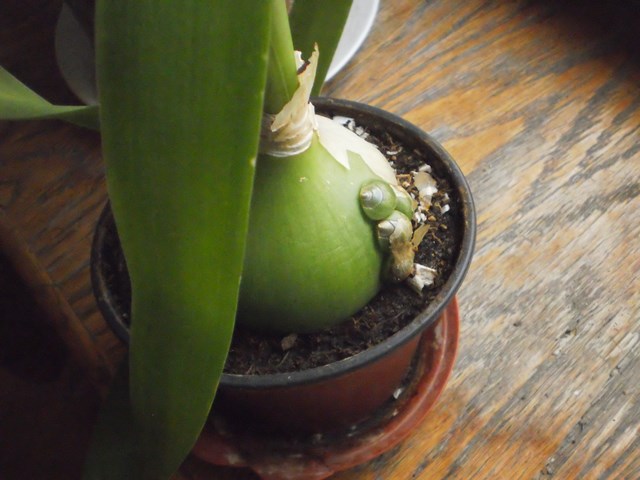At the end of the twentieth century, the Siberian healers turned their attention to the healing properties of Indian onions or the Orchithus (Ornithógalum). Since then, it has gained widespread popularity. Several species of bulbous plants are threatened with destruction. Therefore, they were listed in the Red Book of the Russian Federation.
Table of contents
Description of a flowering plant
Ornithohalum is a perennial plant of the Asparagaceae family. Historical homeland is considered to be South America. In Russia, the species was introduced to the Leningrad Botanical Institute from Germany. The name of the Indian onion was given by the association of burning milky juice with Indian seasonings, and not by the geographical area of growth.
The ornamental plant has a stem in the form of a bulb located above the top layer of soil. The leaves are long, flat as they grow, change their position, fall down, twisting at the ends. The color is dark green with a yellow stripe in the center. The biennial produces an arrow framed in small white or cream inflorescences.
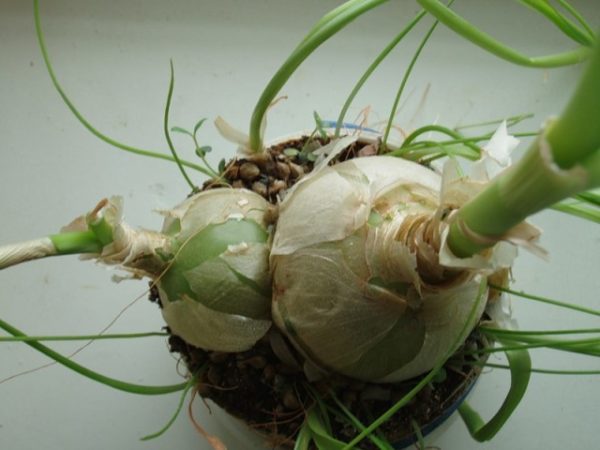
The cultivation of Indian onions occurs in greenhouses or in residential areas. Does not require increased attention. Comfortably feels on the north windows and in the back of the room. Watering moderate as the topsoil dries. For the summer, the poultry bird is taken out into the open air or transplanted into the ground. In the winter return to the room.
The composition of Indian onions
In traditional medicine, Ornithohalum has not found application, it is not in the reference books of medicinal herbs. For traditional healers, biologically active substances are valuable, composed of leaves and seeds:
- essential oil;
- organic acids;
- type of glycosides;
- alkaloid group (colchicine, thiocolchicine, colchicoside).
The medical value of the plant, the presence of alkaloids in the composition. But they are not enough to interest the pharmacological industry in Indian onions as raw materials.
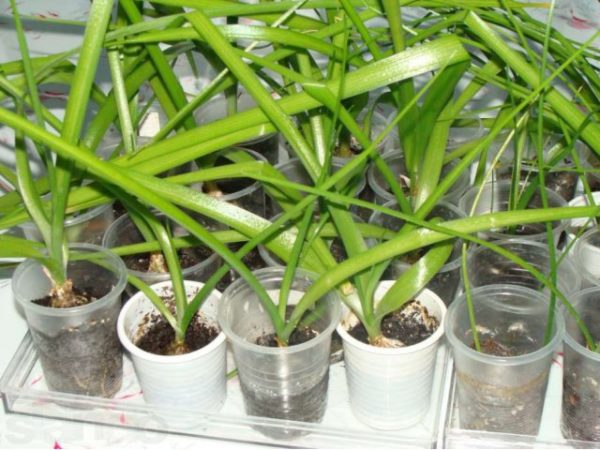
Useful and healing properties
Traditional medicine uses an ornamental plant, as a component of ointments, tinctures on water and alcohol-based, for external use. Ornithógalum juice contains an antibiotic, it has an antiseptic and antibacterial effect. It has an analgesic effect. Active substances, penetrating through the epidermis, relieve inflammation and relieve pain. Applied to:
- With hematomas and fractures.
- From rheumatic pains in the joints (polyarthritis, arthritis).
- To accelerate the regeneration of damaged tissues.
- As an antibacterial agent in inflammatory processes.
- In the complex treatment of sciatica and osteochondrosis.
- To relieve itching and redness in the area affected by insects.
- With varicose veins and neoplasms associated with HPV (papillomas, warts), foot fungus.
Alkaloids relieve swelling, prevent the formation of malignant tumors. When applied to the skin, expand the walls of the capillaries, help to improve blood flow to the problem area.
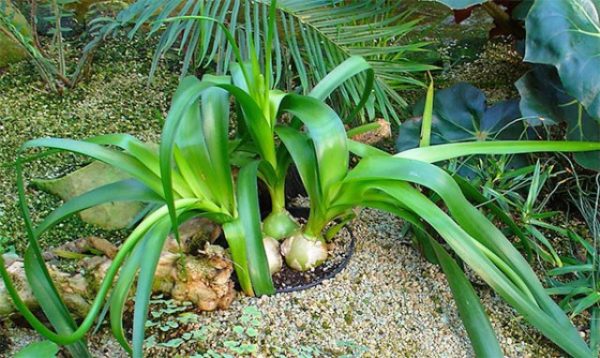
When cutting leaves, Indian onions will not suffer, and there will be enough raw materials for dosage forms (ointments, tinctures).
Contraindications for use
Apply funds based on Ornithohalum, given that the onions are toxic, it is necessary with caution. With a number of factors, treatment is not acceptable. These include:
- bleeding gums, the means will worsen their condition;
- hemophilia, excessive blood flow, will affect the walls of blood vessels;
- pregnancy and lactation;
- allergy.
To test the tolerance of the body on alkaloids, it is necessary to apply the plant sap on the inside of the elbow bend. After two hours, check the test result. If the surface of the skin does not change, the result is negative. When:
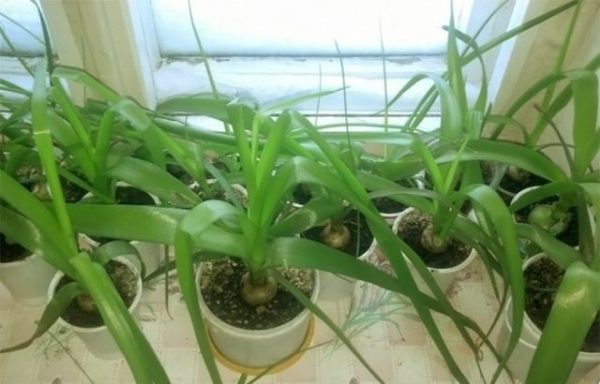
- redness;
- itching;
- puffiness;
- blistering.
Use Indian onions as a medicine is not permissible.
With long-term use of funds, based on the plant, colchicine, penetrating through the skin, can cause a decrease in leukocytes (leukopenia). The course should not exceed 30 days.
After using ointments or tinctures, hands should be washed thoroughly with soap. If the components of the plant come into contact with the conjunctiva (the mucous membrane of the eye), rinse with water.
The use of onions in traditional medicine at home
Thanks to the therapeutic elements in the composition of the poultry, folk healers use all parts of the ornamental plant. If an onion is needed for cooking, the plant will die. Apply for treatment not only means, but also pure juice.
Indian onions have been effective in treating bruises and hematomas.Influencing peripheral vessels, improves the metabolic process between the blood and damaged tissues. Removes swelling and characteristic pigmentation.
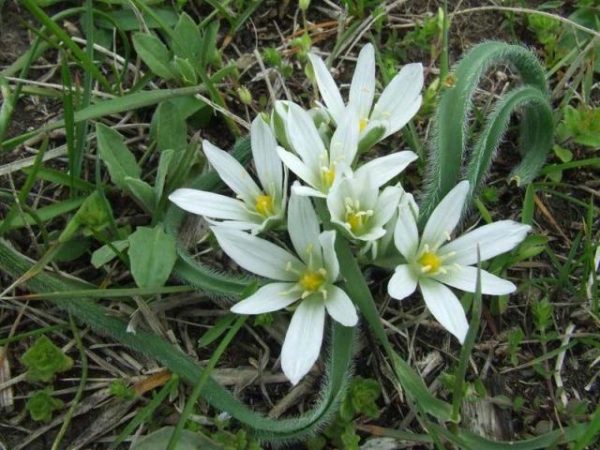
For the analgesic effect, Ornithohalum is used in complex therapy for stretching muscles or ligaments. It relieves pain syndrome of neuralgic nature (sciatica), with the deposition of salts (osteochondrosis, polyarthritis).
Recipes
For the preparation of medicines from Indian onions, taken "adult" plant. The optimal concentration of active substances is achieved in 2 years. In the manufacture of tinctures, it is desirable to consider that colchicine is poorly soluble in alcohol. Therefore, the tool is water-based, will be many times more toxic.
Do not use metal objects when working with poultry. Take care of rubber gloves.If household appliances (mixer, blender, meat grinder) were used, it is recommended to treat it with a disinfectant and wash it with hot water.
Substance for compress
Crushed leaves before the formation of gruel. It is used for compresses on the back or joints with radiculitis and rheumatism. The procedure will help get rid of the pain. In order to avoid chemical burns, the substance is applied on a gauze napkin, then put on the problem area.
The following method is also suitable for compress. The juice is squeezed out of the crushed leaves, stored in a glass container for 4 days. Apply as an application or compress for neuralgic diseases and salt deposition.
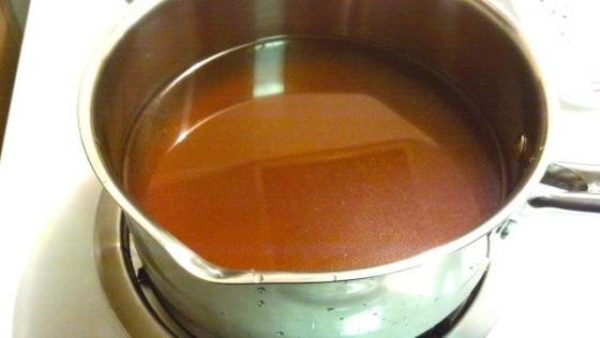
Infusions
For the preparation you will need a sheet of Indian onion 15-25 centimeters long. It is crushed, placed in a thermos and poured boiling water (1 liter). Allow to infuse within 2 hours.
On the basis of alcohol is prepared as follows:
- bulb with an arrow or leaves is crushed;
- poured into a plastic or glass container with a liter of ethanol;
- aged at a moderate temperature for 21 days.
On the basis of kerosene effectively acts with radiculitis. Ingredients:
- leaves of the plant (a total of 45-50 centimeters long);
- 200 grams of pure kerosene;
- 250 grams of oil (sunflower, olive, mustard).
It is placed in a glass jar, hermetically sealed, infused at a temperature of 25 degrees for 2 weeks. Periodically the contents are shaken.
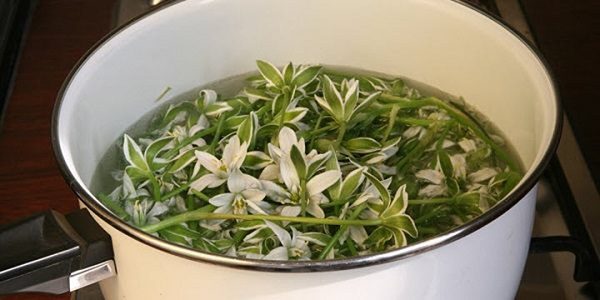
Ointment
Ointments are used to treat joint pathologies and wound healing with purulent formation. The basis will be animal fat from sheep wool (lanolin), it will need 45 ml. Add 2.5 tablespoons of honey and gruel from the leaf of a plant.
For the following ointment recipe you will need:
- 2 egg yolks;
- 3 tablespoons of sea buckthorn oil;
- a piece of beeswax, measuring 5: 2 centimeters;
- 1 spoon of kerosene;
- 2 spoons of plant juice.
Observe the cooking sequence. In boiling oil, wax dissolves. After the composition has cooled down, kerosene, Indian onion juice, and last of all yolks is added. After stirring, the mass is ready for use.
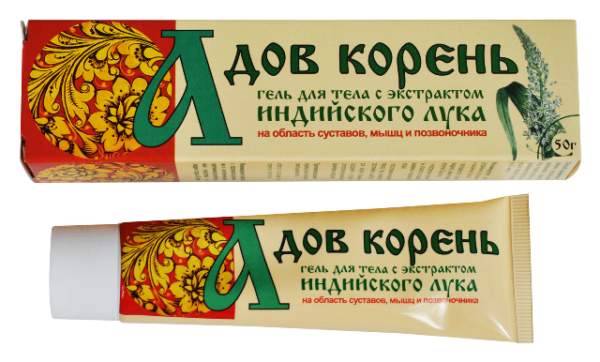
Ornitogalum decoctions, used less frequently, they are not as effective. Cook on low heat for 25-30 minutes (1.5 liters of water, 25 cm sheet). When it cools, you can apply.
As well as any folk remedy, the medicine made from the Umbilia bird is recommended to be used in combination with traditional therapy, after consulting a doctor. Given that the juice contains toxic substances in room conditions, flower pots should be placed out of the reach of children and pets.
